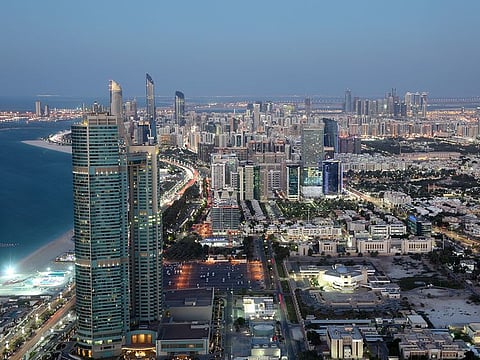UAE’s sovereign fund buffers can support fiscal deficits for decades
GCC wealth funds face depletion from drawdowns

Dubai: Lower oil prices triggered by the pandemic have seen significant drawdowns from the GCC sovereign wealth funds resulting in erosion in these buffers, according to rating agency Moody’s.
The impact of the coronavirus pandemic on oil demand and prices has significantly increased gross funding requirements for sovereigns across the GCC, which is being partly funded by drawing down sovereign wealth fund (SWF) assets.
“We expect oil prices to remain below their pre-coronavirus path, due to long-lasting reductions in oil demand in sectors like aviation. Markedly lower hydrocarbon revenues will translate into persistently higher budget deficits – despite some adjustments to expenditure and non-oil revenue measures – leading to higher financing requirements,” said Thaddeus Best, Analyst Sovereign Risk Group at Moody’s.
UAE, Qatar in strong position
According to Moody’s, the stock of SWF assets in Qatar and Abu Dhabi (UAE) remains more than ample to cover decades of fiscal deficits at current levels. However, for Oman and Saudi Arabia, which possess a more modest stock of SWF assets, significant drawdowns will lead to substantial erosion of their SWF buffers over the medium term, reducing the uplift to fiscal strength derived from these assets, and increasing external vulnerability risks in Oman.
In Kuwait, very large fiscal deficits have largely depleted the liquid portion of the smaller General Reserve Fund, increasing liquidity risks in the absence of a debt law despite the large stock of assets held in the Future Generations Fund, which are currently ring-fenced from the general budget.
Lower flows into SWFs
While governments are drawing more heavily on their SWF buffers, lower oil prices will significantly reduce the flow of assets to GCC SWFs, which are almost entirely derived from excess hydrocarbon revenue.
“While the recovery in equity market valuations last year reversed the paper losses facing GCC SWFs, lower oil prices will keep transfers flowing out of most SWFs on a net basis,” said Best.
In Saudi Arabia, Qatar, Oman and Abu Dhabi, fiscal deficits over 2021 will leave no spare revenue for transfer into their respective SWFs. Most of the SWFs in the region are funded on an irregular basis whenever budgetary surpluses permit, with the exception of Oman’s Petroleum Reserve Fund (PRF) and – until August 2020 – Kuwait’s FGF [Future Generations Fund]. In Oman, the value of 20,000 barrels per day of production is transferred to the PRF. The government also mandates that whenever the daily price of the Omani benchmark exceeds $65/barrel, this is transferred to the PRF. The PRF is managed as part of the central bank’s reserves, and was worth $2.9 billion at the end of 2019.
In Saudi Arabia, Public Investment Fund (PIF) received proceeds from last year’s Aramco IPO (possibly up to $25 billion), and will also receive proceeds from its sale of SABIC to Aramco over the coming years ($69 billion, of which $7 billion was paid in August 2020). Furthermore, in May the government announced that during March and April SAMA moved $40 billion PIF.
Higher risks for Oman
Reserve adequacy remains more than ample to support most GCC currency pegs. However, in Oman’s case, large twin deficits will lead to a decline in both international reserves and SWF assets, increasing external vulnerability risks over the medium-term.
Moody’s said the declining SWF assets will also increase external vulnerability risks and could weaken confidence in Oman’s currency peg. Reserve adequacy remains more than ample for most GCC currency pegs. However, in Oman’s case, large twin deficits will lead to a decline in both international reserves and SWF assets. The erosion of Oman’s SWF assets could increase risks to the currency peg given their status as a source of support for the external accounts.
Liquid foreign currency SWF assets represent a source of contingent support for the GCC currency pegs, and external accounts more generally.
According to Moody’s liquid foreign currency SWF assets of the UAE (including Abu Dhabi’s SWF assets), Qatar and Kuwait have adequate reserves to support the exchange rate against external shocks even if overall SWF levels decline slightly while the decline in Saudi Arabia’s SWF assets poses a lesser risk to external accounts stability as central bank foreign currency reserves are substantial.
Sign up for the Daily Briefing
Get the latest news and updates straight to your inbox






